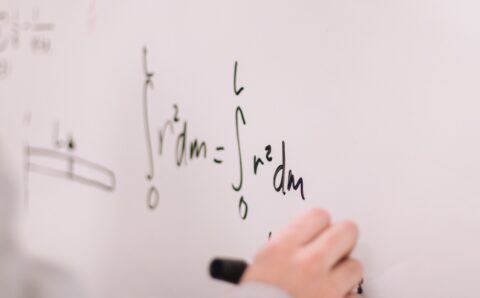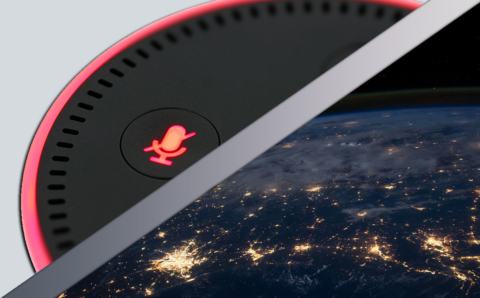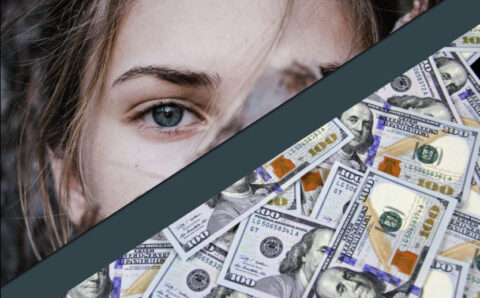Ryan Derenberger is a freelance journalist and editor, a Journalism and AP Language teacher at Whitman HS in Bethesda, MD, and the founder of 'The Idea Sift.' He also serves on the board of directors for student journalism nonprofit 'Kidizenship.'
June 30th, 2020 at 10:22 pm EDT
At a time when an international crisis is exposing nationally the massive gaps we’ve left between what minority populations have and what they need, schools and school boards across the country are considering an end to the very positions tasked with mitigating inequity.
The jobs and in turn the livelihoods of educators of all kinds (including and especially those new to the profession, you know, the ones more recently trained in current pedagogy and research?) are all in jeopardy — but some of the most highly-influential soon-to-be-cut educators are the selfsame professionals who oversee and aid in digital learning practices. They tutor teachers. They write, direct and star in how-to videos. They organize distribution of devices to low-income families. They troubleshoot. They make digital learning make sense, and they do so for every stakeholder.
Their formal title? Commonly, “Staff Development Teacher,” an anemic term if there ever were one.
Is it any surprise they and workers like them are finding themselves first on the chopping block? “A wh—what kind of teacher? What is it that they do again?”
Robert Reich numbered them among his “symbolic analysts.” I prefer a slightly more accessible term: “creative analysts.”
For these creative analysts to be so cavalierly tossed aside before a single other salary gets renegotiated is a symptom of their lack of influence, of a country whose leaders suffer from a dramatic lack of creativity and a lack of trust in those who have it.
Our country has undervalued such positions far beyond the walls of schools for years, positions that are the very innovative ones who guide institutions safely through bottlenecks of all kinds, of automation, of globalization, of overeducation, of debt and income inequality — to say nothing of the ultimate bottleneck, a coronavirus-filled Earth with coronavirus-filled nations, coronavirus-filled storefronts and coronavirus-filled classrooms.
Next, the coronavirus will reach deep into the safety of our white collars: “Get this,” it’ll snarl. “They’re firing the people whose job it is to have new ideas.”
We need to “think different”; Jobs was right. Our old ideas and understanding cannot carry us through 2020 effectively. Creative analysts maybe can.
They and those like them were already the ones behind such shifts like the incoming efficiency of the four-day work week, and the “you could have said that in an email” tough love. With the right level of trust, and a sufficiently grim starting point, creative analysts don’t need Nobel Prizes to be as massively influential for their immediate place of work as say John Nash was for the greater field of economics.
In May, The Washington Post published 40 “smart solutions” from a variety of creative analysts, both on staff and off, columnists and freelancers broadcasting expertise like late-career scientists pinging extraterrestrials and waiting patiently for responses.
Few of those published solutions are even in the national conversation, let alone in implementation.
Still equipped with mostly aged ideas from times where creative analysts were pirchfoked into silence, we as a developed nation are doing little more than treading water.
It seems no matter whom you ask, it’s been like this in the United States for decades. To both the free-market capitalist and the leftist, the American economy was already on the brink of complete collapse. The capitalist’s cackle: we had to invoke a “Small Business Saturday” to get consumers to spend their money on a less-convenient product. The leftist’s tears: across the street at the wildly successful big-box warehouses and storefronts, the average middle-income employee is not doing well either, each often underpaid, underinsured and underemployed.
The first wave of unemployment in the coronavirus crisis crashed right onto a certain kind of gig, that of hourly workers whose construction sites had halted, independent-contractor deals shredded, Uber drivers parked.
Next, the coronavirus will reach deep into the safety of our white collars: “Get this,” it’ll snarl. “They’re firing the people whose job it is to have new ideas.”
Still equipped with mostly aged ideas from times where creative analysts were pirchfoked into silence, we as a developed nation are doing little more than treading water.
This is a terrifying development, the loss of strategists and their battlemaps simultaneously.
A paradox: we are somehow at once the toddlers of logic, and the comatose of creativity. Such childlike ignorance surely must come with imagination.
All upper management and boards — yes, of education, but also of companies small and large alike, of nations already prosperous and those budding — make no mistake: you all need creative analysts. Dare I say, organizations should actually want to employ such “good cops,” free to roam and aid in ways that, frankly, are quite measurable even for those counting decimals. The value here isn’t some hippie hogwash; the value is in employees’ becoming more efficient, more effective, less stressed, more focused, more capable of doing the jobs we all need them to do so well now more so than ever.
For these creative analysts to be so cavalierly tossed aside before a single other salary gets renegotiated is a symptom of their lack of influence, of a country whose leaders suffer from a dramatic lack of creativity and a lack of trust in those who have it. Yet like a single match in darkness, one such analyst could fill a boardroom with insight tomorrow.
We need that insight. All of it.
In 2014, the College Board asked AP Language and Composition students to argue for or against the idea of teaching “creativity classes” in schools. To believers, the prompt offered, these classes would constitute evidence-based correctives for our country’s “Creativity Crisis,” from which so many of past, present, and then-future problems would stem.
The prompt more or less intimated that, for others, the mere idea of a creativity class could be nothing more than the ramblings of hyperliberals, their imaginations run amuck yet again.
“Write to your school board,” it read, “explaining what you mean by creativity and arguing for or against the creation of a class in creativity.”
You choose.
Professional-development employees and efficiency consultants should number among the first on the chopping block in times of budget crises.
THE SIFT
Across the country, our most creative analysts should be the last to be laid off; theirs are the very minds we need in order to successfully thread through the bottleneck that is 2020.
Ryan Derenberger is a freelance journalist and editor, a Journalism and AP Language teacher at Whitman HS in Bethesda, MD, and the founder of 'The Idea Sift.' He also serves on the board of directors for student journalism nonprofit 'Kidizenship.'












